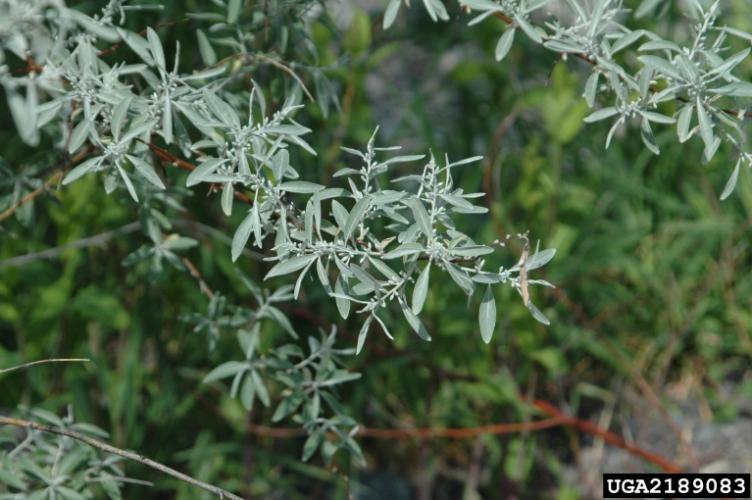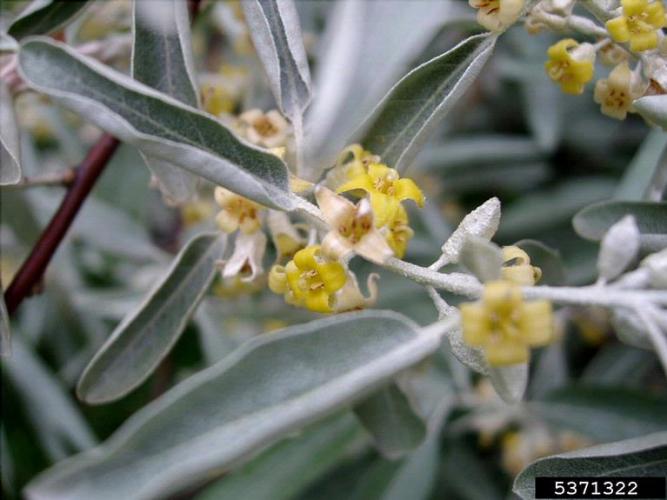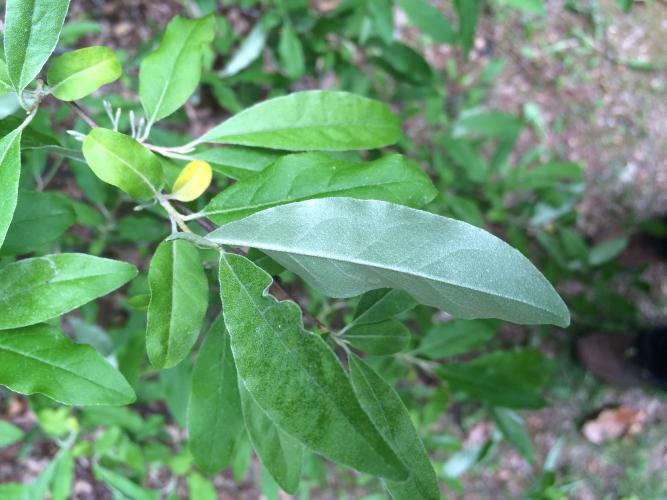Russian olive
Identification
Appearance
Elaeagnus angustifolia is a shrub or small tree that can grow to 35 feet tall. The young branches are silvery while the older branches are brown. They are occasionally thorny and covered with scales.
Foliage
The leaves are simple, alternate and lanceolate to oblong-lanceolate. They are 1-4 inches long and have silver scales on both sides.
Flowers
The fragrant flowers are 0.5-0.6 inches wide, silvery outside and yellow within. There are 1-3 flowers within the leaf axils. They appear in May to June.
Fruit
The fruit are 0.4 inches long, are yellow and almost completely covered by densely silver scales. The fruit contain one large seed that can be up to 0.4 inches long within.
Biology
ECOLOGICAL THREAT
These shrubs are highly competitive against native species, shading out shorter plants. Their nitrogen-fixing capabilities may adversely affect the nitrogen cycle of native communities that depend on infertile soils. Although Russian and autumn olive provide a plentiful source of berries for birds, their fruits are actually quite low in nutrients. Ecologists have found that bird species richness is higher in riparian areas dominated by native vegetation.
ORIgIN
Both Russian and autumn olive were introduced into the United States in the 1800s. Prized for their silvery foliage, hardiness and plentiful berries, these shrubs were planted as ornamentals, for erosion control and windbreaks, and in wildlife food plots.
HABITAT
Forest, forest edge, meadows, fields, disturbed areas
LIFE CYCLE
Small yellow or white flowers become edible fruits in late summer and fall, which are red in autumn olive and orange in Russian olive.
Vermont Distribution
How You Can Help
NATIVE/NON-INVASIVE ALTERNATIVES
Fragrant sumac (Rhus aromatica)
Native Perennials and Shrubs for Vermont Gardens
Alternatives to Common Invasive Plants and Characteristics of Select Alternatives
Citations
PHOTO CREDITS
Russian Olive, UGA2189083, Chris Evans, University of Illinois, CC Non-com 3.0
Russian olive, 5371322, Jan Samanek, Phytosanitary Administration, CC 3.0
Autumn olive, Autumn olive, E Spinney, VT FPR
INFORMATION CREDIT
Video: University of Wyoming Extension, Russian Olive


